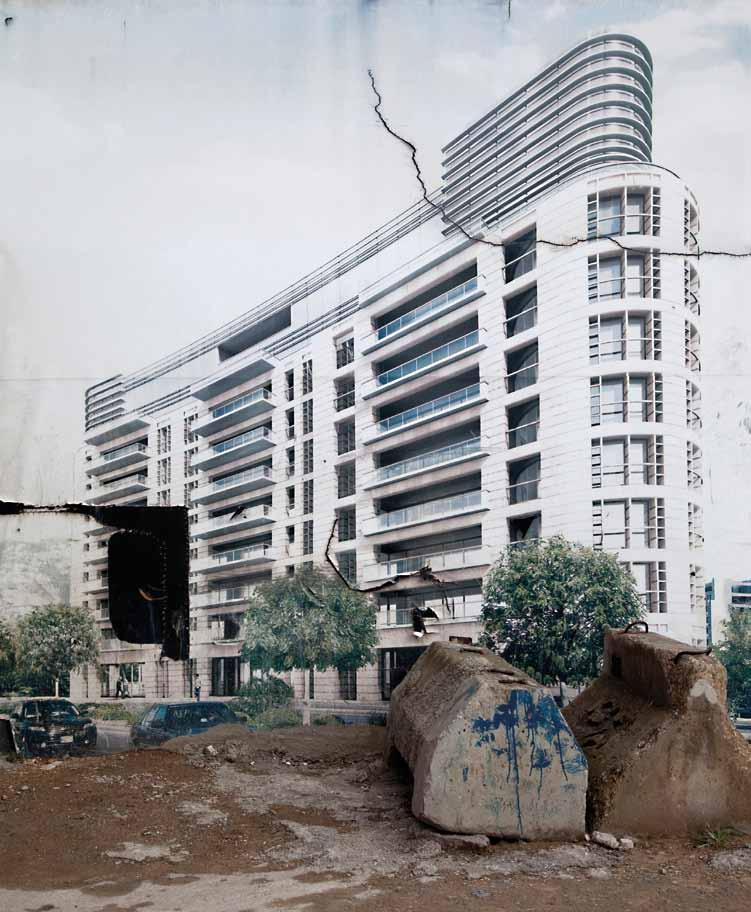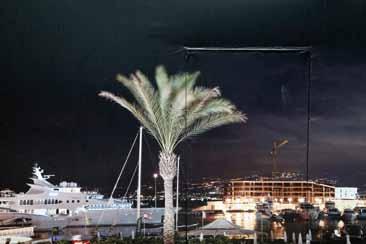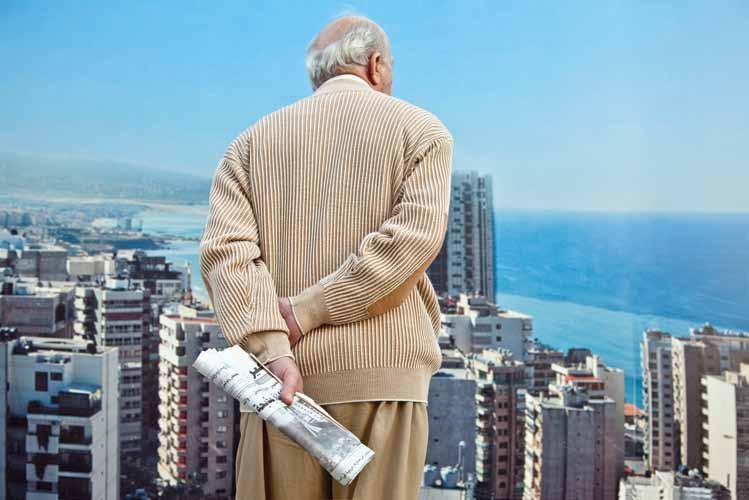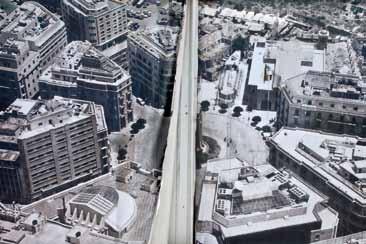
5 minute read
By: Emma Warburton Randa Mirza By: Emma Warburton
from Tribe 09
Randa Mirza: Beirutopia Post-war Beirut is a city for sale
Following the end of the Lebanese civil war in 1990, Beirut endeavoured to reclaim itself and restore its reputation as a glamorous, sophisticated and modern destination. The city pined after the now elusive memories of itself as a romantic cultural hub, but still it embarked on the task to reconstitute its identity under the fading pretence that it was once praised ‘the Paris of the Middle East.’ Fast-forward to the present day, and this sentiment has materialized in a city-wide campaign for constant urban development and renewal. Construction sites and billboards populate the landscape, and testify to a capitalist attitude that has rendered Beirut a product, rather than a site with unique historical and cultural value that should be preserved and protected.
Advertisement
Randa Mirza’s photographic series Beirutopia (2011 - ongoing) captures details of Beirut’s urban landscape to illustrate a progressive ideological shift she has observed in the city, whereby the social and cultural values that defined Beirut prior to the Lebanese war have been replaced with the values of capitalism and materialism. The idea for the series came to the artist during a peak in the construction boom. Mirza’s observations of Beirut at that time, and her uncomfortable and alienated response to her native city, are what compelled her to begin photographing the landscape. She states:
“Today the city is still a huge construction site. I watched it changing rapidly… it became unrecognizable to the people living in it. There were new buildings appearing but also there were old buildings disappearing. The new promise for Beirut did not appeal to me. It was profit oriented.” In essence, Beirutopia is a series of photos depicting construction sites. To be ‘under construction’ implies a state of incompletion. A site under construction is one that has abandoned its previous identity, but has not yet arrived at its future one. It is, perhaps, in a state of non-existence. For Mirza, Beirut is in a continuous cycle of reinventing its identity without ever actualizing it. Therefore the city is in a perpetually dissatisfied—it is under construction, and therefore unfulfilled. There is a tone to Mirza’s words that suggest these developments are excessive —so excessive and so rapid that even locals cannot keep track of their city’s changing form. This idea of dissatisfaction links well with materialism and capitalism, both of which operate under the generalized concept that more is never enough. There is a sense, too, that the city-wide construction is not actually serving the people of Beirut. Instead, it serves Capitalism. As Mirza describes, when one structure is erected, another is dismantled, and in this manic process of reinventing the city, the needs and expectations of the very people who depend on it are ignored for the allure of profit and prestige. The ‘new’ Beirut, as Mirza suggests, is a foreign place. Perhaps this is because the new Beirut does not take form with people in mind. Instead it serves the purpose of generating profit, and leaves little room for sentimentality, nostalgia or even modest practicality.
Beirutopia depicts construction sites that Mirza has encountered throughout the city. These sites are photographed just as they are; they are carefully framed, but not staged. Promoting these projects are large billboards that advertise a forward-thinking vision for the space. They are hyper-realistic, computerized renderings that simulate the future building, its interior, and its surroundings to create the most convincing of illusions. These billboards metaphorically mirror the city of Beirut itself. Like Beirut, they offer a vision for the future that will never be truly realised and they manipulate the community with promises they can never fully keep. Essentially, these advertisements are optical illusions, meant to deceive. But with astute framing and compositional techniques, Mirza succeeds in poking holes in the pastiche, and revealing the dishonesty at the crux of Beirut’s redevelopment narrative.
Mirza describes Beirutopia as a series of ‘twodimensional dioramas.’ That is to say that each photo is constituted of a three dimensional front plane (often a physical object or person that is present in the space as Mirza photographs it), a two dimensional second plane (the hyper-realistic billboards that create an illusion of reality, a virtual reality) and a third, hidden plane that is behind the billboard (actual reality, concealed). These planes also function to metaphorically trace time, whereby the front plane is the actual present, the second plane is the pretend present (or projected future), and the third is the disheartened past.
Beirutopia portrays the city as a product. It is simply a platform for advertising space—space that can be bought, leased, or consumed in some form or another. The series emphasizes the notion that preserving profit is more important than preserving culture, society and history. All over the world, the destruction of cultural heritage is being justified by the concept of renewal and modernity. And what can we do, except mourn our losses in disbelief, and tell ourselves that there is a time for everything to disappear..
The selective residence from the series Beirutopia (2011 - ongoing) 80 x 110 cm
A new standard of luxury and services from the series Beirutopia (2011 - on oing) 80 x 110 cm


Real properties from the series Beirutopia
(2011 - ongoing) 80 x 110 cm

Beirut is back and it’s beautiful from the series Beirutopia (2011 - ongoing) 80 x 110 cm

Clockwise: Beirut revit son age, something to look up to, a dream you call home and Reviving the
soul of beirut from the series Beirutopia (2011 - ongoing) 80 x 110 cm














